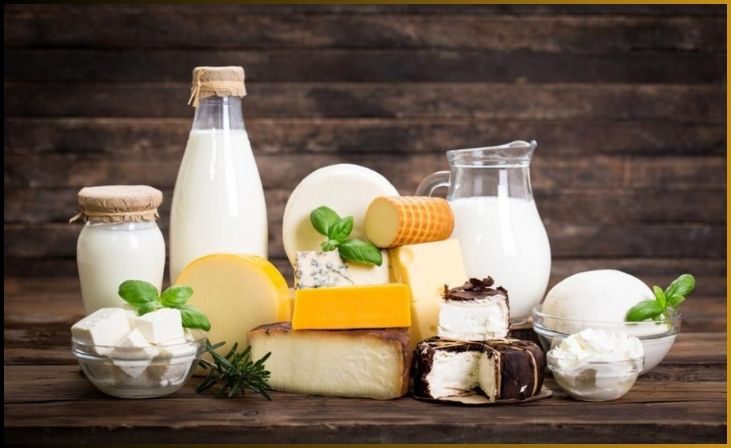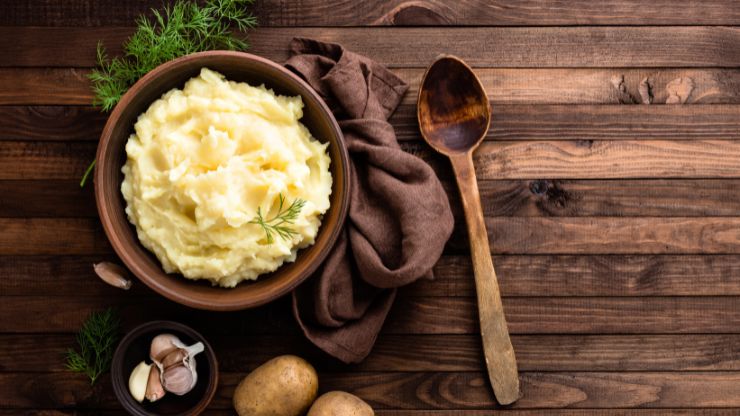The holiday season brings with it a symphony of flavors and traditions, and at the heart of many celebratory feasts lies a simple yet extraordinary culinary delight – cultured raw milk butter. This time-honored treasure has graced tables for generations, offering a depth of flavor and complexity that elevates holiday dishes to new heights.
In this blog, we embark on a journey into the world of cultured raw milk butter, exploring its rich historical significance, the art of crafting it, and the many ways it can transform your holiday table. From its distinctive tangy taste to its versatile uses, cultured raw milk butter is a culinary gem that connects us to traditions of the past and adds a touch of sophistication to our festive menus.
Join us as we delve into the magic of this butter, unlocking the secrets of its creation and uncovering the delectable dishes it can enhance during the holiday season.
Table of Contents
ToggleThe Tradition of Cultured Raw Milk Butter
Cultured raw milk butter has a deep and storied history, dating back centuries in various cultures around the world. It’s a testament to the age-old practice of fermenting cream, churning it into butter, and savoring the rich and complex flavors that result.
Also Read- Quick Probiotic Banana Pudding Cups
The Fermentation Process
The magic of cultured butter begins with the fermentation of raw milk or cream. Bacteria cultures are introduced to the milk, which initiate the fermentation process. These friendly bacteria consume the milk’s natural sugars and produce lactic acid, which gives the butter its tangy and complex taste. This natural fermentation process sets cultured butter apart from its sweet cream counterpart.
The Churning
Once the cream is fermented, it’s churned to separate the butterfat from the buttermilk. The result is a thick and creamy butter with a distinctly rich flavor. The churning process can be done by hand or using modern appliances, but the essence of traditional craftsmanship remains the same.
Crafting Your Own Cultured Raw Milk Butter
Ingredients:
- Raw milk or cream (ideally from pastured, grass-fed cows)
- A bacterial starter culture (commonly Lactococcus or Lactobacillus)
- A pinch of salt (optional)
Instructions:
1. Fermentation

Fermentation is a fundamental biological process that plays a crucial role in the creation of cultured raw milk butter. In this process, microorganisms, often lactic acid bacteria, are introduced to the raw milk or cream. These friendly bacteria consume the milk’s natural sugars and convert them into lactic acid. This conversion results in the tangy and complex flavor profile that distinguishes cultured butter from its unsalted sweet cream counterpart.
During fermentation, the milk’s pH level decreases as lactic acid production increases. This drop in pH helps preserve the butter by creating an acidic environment that inhibits the growth of harmful bacteria. Simultaneously, the acidification process imparts a delightful tanginess and a unique depth of flavor to the butter, making it a prized addition to holiday tables and culinary creations. The art of fermentation, a timeless tradition, breathes life and character into cultured raw milk butter, making it an indispensable part of holiday feasts and year-round dining.
2. Churning
Churning is the pivotal stage in the creation of cultured raw milk butter, where the fermented cream is transformed into a luscious and flavorful product. During this process, the cream, now enriched with the tangy notes of fermentation, is agitated vigorously to separate the butterfat from the buttermilk. This separation occurs as the fat globules within the cream clump together.
Historically, this stage involved hand-churning, a labor-intensive task often performed in households and dairy farms. Today, modern appliances like stand mixers and blenders can also be used for churning, making the process more accessible. Regardless of the method, the end result is the same: the transformation of cream into butter, with the buttermilk being a valuable byproduct.
3. Separation and Washing
After the churning process, the butterfat and buttermilk are distinct, but there is still one crucial step to undertake – separation and washing. Separation is the process of draining and isolating the newly formed butterfat from the liquid buttermilk. This step is important for several reasons.
First, it helps ensure that the butterfat is as pure as possible, free from excess liquid. This will extend the butter’s shelf life and prevent it from spoiling prematurely.
Second, separation removes any remnants of buttermilk from the butter. Buttermilk contains residual sugars and proteins that can cause the butter to spoil or become rancid if not properly removed.
Don't just scroll, subscribe!
BuzzTrail's unique web-stories are the cure for boredom you've been waiting for.
4. Salt and Flavor (Optional)
The addition of salt and flavor to cultured raw milk butter is an optional but delightful step in the butter-making process. While the natural tanginess of the butter, acquired through fermentation, is a wonderful flavor in itself, many butter enthusiasts choose to enhance it further.
A pinch of salt is often kneaded into the butter to amplify its taste and provide a subtle contrast to the tangy notes. The amount of salt used can be adjusted to personal taste, making it a highly customizable aspect of butter crafting. Salt not only enhances the overall flavor but also acts as a preservative, extending the butter’s shelf life.
5. Shaping and Storing

Once you’ve crafted your cultured raw milk butter to perfection, the final steps are shaping and storing. These steps are vital to preserving the quality of your butter, ensuring it remains a delightful addition to your holiday table and culinary creations.
Shaping the butter is the process of forming it into the desired shape or size. You can create a classic log shape, mold it into blocks, or even use decorative molds for a festive touch. Shaping the butter allows you to present it beautifully and makes it easier to portion and serve.
The Significance of Cultured Raw Milk Butter for the Holidays
Cultured raw milk butter brings depth and tradition to holiday meals. Explore its rich history and culinary importance.
Flavor Complexity
The defining feature of cultured raw milk butter is its rich and complex flavor. The tangy notes from the fermentation process add depth to dishes, making it a perfect accompaniment for holiday classics like roasted turkey, mashed potatoes, and warm, crusty bread. This butter can be a flavor enhancer, elevating your entire holiday meal.
Historical Significance
Cultured butter has historical significance in many cultures. For example, in Scandinavian countries, it’s a staple for holiday feasts and traditional dishes. The creamy, tangy notes of cultured butter provide a link to the past, connecting us to culinary traditions that span generations.
Versatile Use
Cultured raw milk butter is incredibly versatile. It can be used as a spread on warm rolls or used to baste a roasting turkey or chicken. You can also mix it with herbs and spices to create compound butter for added flavor. Furthermore, it serves as a fantastic base for rich and creamy sauces, elevating your holiday recipes.
Incorporating Cultured Raw Milk Butter into Your Holiday Menu
- Roast Turkey or Chicken: Use cultured butter to baste your holiday bird. The butter’s richness and tangy flavor will infuse the meat with a delightful depth of taste.
- Mashed Potatoes: Mix in a generous spoonful of cultured butter into your mashed potatoes to add creaminess and a hint of tang. It takes this classic side dish to a whole new level.
- Rolls and Breads: Spread cultured butter on warm dinner rolls or fresh bread, allowing your guests to savor the rich and complex flavors with every bite.
- Sauces and Gravies: Create sumptuous sauces and gravies using cultured raw milk butter as a base. Its depth of flavor will complement any meat or vegetable dish.
- Herbed Compound Butter: Mix fresh herbs, garlic, or other seasonings into your cultured butter to create a flavorful compound butter. It’s perfect for finishing dishes or serving as a condiment.
Incorporating cultured raw milk butter into your holiday menu brings a taste of tradition and sophistication to your festivities. It’s a simple yet profound way to add depth and complexity to your dishes, making your holiday table truly memorable.
Also Read- How to Make Cultured Almond Milk
Final Thoughts
As we conclude our exploration of the delectable world of cultured raw milk butter, it’s clear that this culinary treasure is more than just a condiment; it’s a connection to history, tradition, and an elevated dining experience. Cultured butter’s rich, tangy notes have graced tables across centuries and cultures, leaving an indelible mark on holiday feasts.
The process of crafting your own cultured raw milk butter is a celebration of both the art of fermentation and the joy of savoring unique flavors. As you shape it into logs, blocks, or any form you desire, you’re not only making butter but also connecting with the rich culinary heritage of countless generations.
This holiday season, consider adding cultured raw milk butter to your table, letting its depth of flavor and historical significance enrich your festive menu. Whether spread on warm rolls, used in savory dishes, or as a base for rich sauces, it’s a culinary gem that can elevate your holiday feasting to a new level.
FAQs
Can I use pasteurized cream to make cultured raw milk butter?
Can I use pasteurized cream to make cultured raw milk butter?
While traditionally made with raw milk or cream, pasteurized cream can be used to create cultured butter, offering a slightly different flavor profile.
What are the key steps in making cultured raw milk butter?
What are the key steps in making cultured raw milk butter?
The process involves fermenting cream, churning it to separate the butterfat, washing the butter, and optionally adding salt for flavor.
Is it safe to consume cultured raw milk butter?
Is it safe to consume cultured raw milk butter?
When prepared and handled correctly, cultured raw milk butter is safe to eat. The fermentation process and acidification help inhibit harmful bacteria.
Can I incorporate cultured raw milk butter into baking and cooking?
Can I incorporate cultured raw milk butter into baking and cooking?
Yes, this versatile butter can be used in both baking and cooking to enhance the flavors of various dishes.

